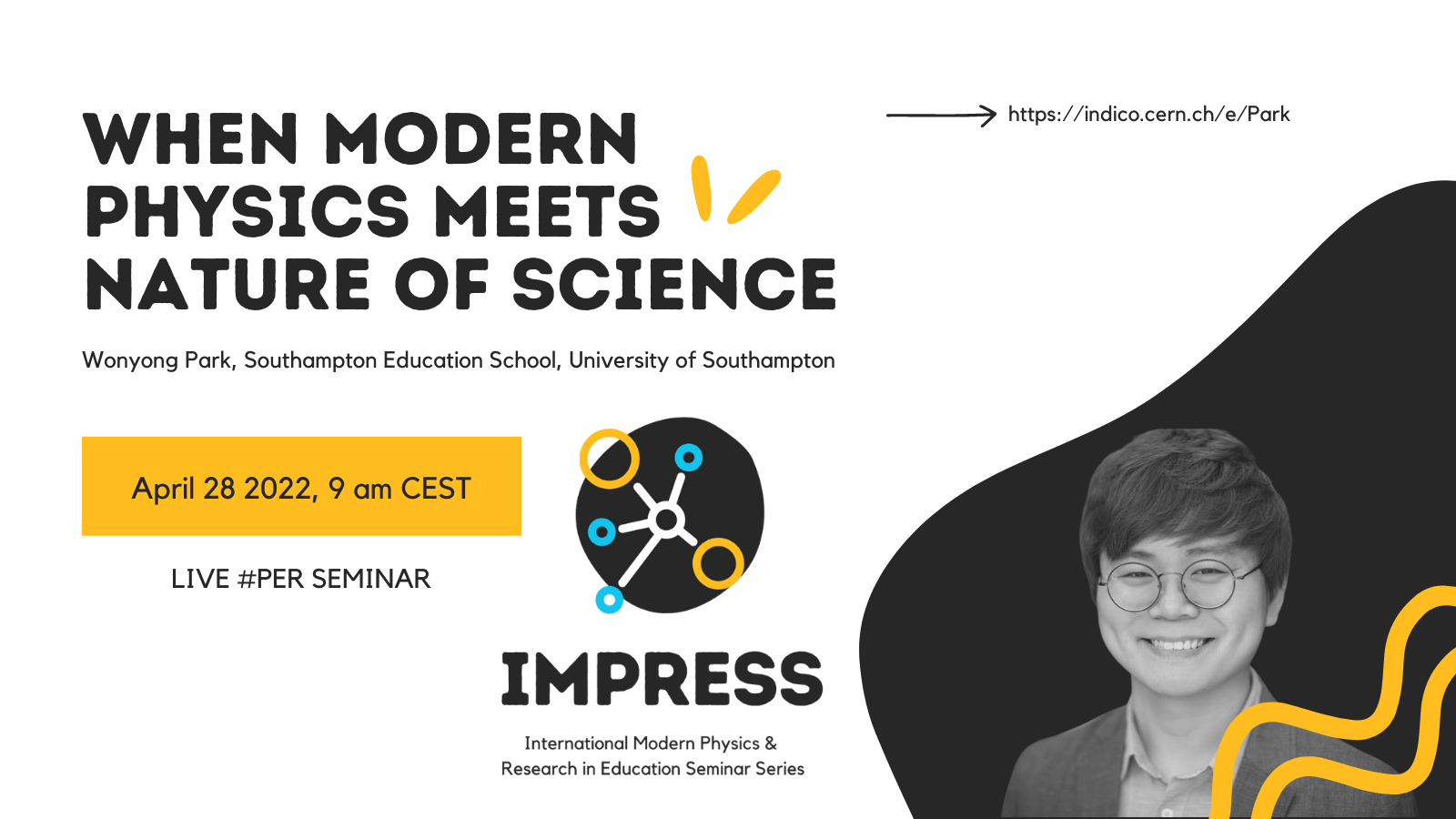When Modern Physics Meets Nature of Science
by
From the big bang to black holes, from elementary particles and the fundamental interactions that govern our universe to the world's largest and most complex scientific instruments, our knowledge of the world builds on modern physics. To make our current-best understanding available to all, we need to invest in educational research and bridge the gap between those who know science, those who teach science, and those who learn science.
This month, we are going to discuss a paper by Wonyong Park, Seungran Yang & Jinwoong Song on the presentation of general relativity in Korean textbooks:
The social reaction to the recent detection of the Higgs boson and gravitational waves provided evidence that public interest in modern physics has reached a high point. Although these modern physics topics are being introduced into the upper secondary physics curricula in a growing number of countries, their potential for teaching various aspects of scientific practice have yet to be explored. This article responds to this call by providing an analysis of new South Korean high school physics textbooks’ representations of nature of science (NOS), particularly as reflected in their general relativity theory section. Chapters from textbooks by five publishers are analyzed through the lens of the expanded family resemblance conceptualization of NOS. The results indicate that textbooks’ references to NOS are concentrated on aspects related to scientific knowledge, scientific practice, scientific methods, and professional activities of scientists, whereas the characteristics of science as a social-institutional system are underrepresented. In addition to this generic description, we also present a closer examination of how physics textbooks portray the story of the LIGO-Virgo Collaboration’s (LVC) gravitational-wave detection in 2015, and discuss implications for how the affordances of contemporary scientific domains such as general relativity and gravitational-wave physics for NOS instruction should be substantiated and supported by textbooks.
Paper:
Park, W., Yang, S., & Song, J. (2019). When modern physics meets nature of science. Science & Education, 28(9), 1055-1083. DOI: 10.1007/s11191-019-00075-9, full text available via researchgate

Magdalena Kersting (Department of Science Education, University of Copenhagen, Denmark) and Julia Woithe (Science Gateway Education, CERN, Switzerland)